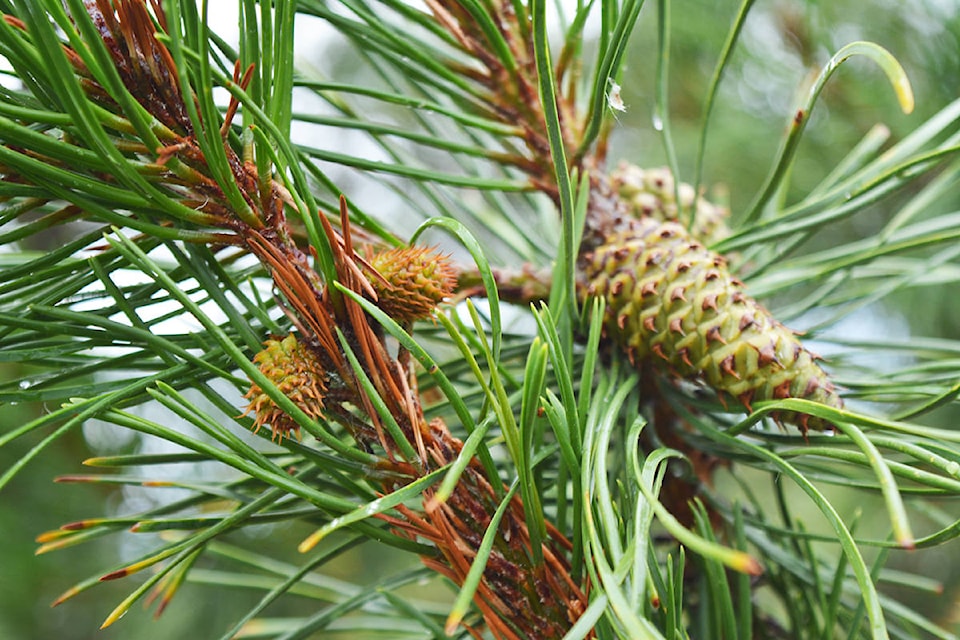We tend to be wasteful when we have an abundance which is true in the forest industry as well.
For example when I first started working in the forest service in the 1970s some trees like pine were considered weed species while fir and spruce trees were the favourite with the bigger trees being the most desirable.
In the Cariboo and many other parts of the province as our forest inventory improved and we realized how much volume was attributed the smaller diameter trees especially pine, the industry evolved to use the so called inferior parts of the forest fibre basket.
It was all related to the tenure holders trying to convince the government that they could use a wider variety of species and smaller sized trees so a higher annual allowable cut (AAC) was feasible. Commercial thinning could be one of the ways for making up the recent losses due to beetle and wild fire.
READ MORE: Herbicide use in forests reduces biodiversity
As described in a July 1999 government document limited commercial thinning has been undertaken in British Columbia, the majority in the Sayward Forest on Vancouver Island.
The traditional objectives of commercial thinning are to obtain wood volume or revenue earlier than the final harvest as well as to improve the growth of residual trees along with the quality of the stand by removing dead, diseased and deformed trees.
A recent article in the logging and sawmilling journal author Jim Stirling provides some interesting background on commercial thinning potential in this province.
“British Columbia’s forest industry tends to apply silvicultural techniques only when forced. Now is one of those times. Canfor, West Fraser and Carrier Lumber are among the growing number of companies taking a serious look at applying commercial thinning techniques on appropriate stands in B.C.
“Selecting the most appropriate sites for commercial thinning will be an early and essential part of the learning curve for B.C. companies.
“Which stands will prove the best candidates for commercial thinning? How can they best be laid out and designed to contain costs as much as possible while meeting the forest company’s expectations for the amounts and quality of the wood extracted?
“Although unusual circumstances have combined to create the necessity of interest in commercial thinning techniques, they may well prove to have an accepted role in forest management.
“In Finland, for example, thinnings are considered an unavoidable part of the silvicultural care of a stand during its rotation period. Therefore, thinnings are not a separate problem but part of the system of growing stands and logging. It was no surprise to the Swedes to confirm commercial thinning harvesting costs are considerably higher than those associated with clear cutting.
“They also quickly discovered that selective thinning techniques were more advantageous to the remaining stand from a biological point of view than geometrical thinning, where the process follows corridors or rows. But the flip side was selective thinning cost more to design and implement.
READ MORE: Eight companies control 50 per cent of B.C.’s public forest tenures
“The main issue with selective thinning techniques is removing the desired stems while minimizing damage to the remaining stand. The working environment is narrow and restrictive.
“The standing stems get in the way, reducing sight lines and limiting machine boom movements. Winching out stems selected for removal demands more labour, and its effectiveness is influenced by snow conditions.
“The Swedish research concluded a new approach was required to commercially thin a stand most effectively, one specifically designed for operating in the restricted environment.
“Much has changed since the 1970s, of course. The knowledge and data gathering about the effects and costs of varying thinning systems on the remaining environment have been collected and analyzed. The experience with thinning systems in Scandinavia and other European countries with forest industries can only help Canadian forest companies. Conditions might vary considerably but the basic premises surrounding commercial thinning systems are as applicable to central B.C. as they are to southern Sweden.”
Jim Hilton is a professional agrologist and forester who has lived and worked in the Cariboo Chilcotin for the past 40 years. Now retired, Hilton still volunteers his skills with local community forests organizations.
Do you have a comment about this story? email:
editor@wltribune.com
Like us on Facebook and follow us on Twitter.
